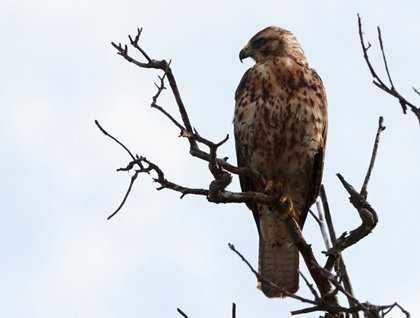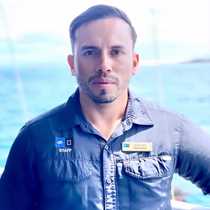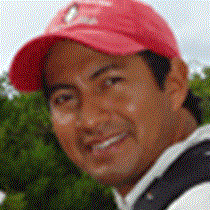We decided that the best way to explore Galápagos is following Darwin’s footsteps in this archipelago, so we dropped anchored on James Island, also known as Santiago. This is the island where Darwin spent nine days collecting species and for the first time visited the humid zone of the Galápagos, getting to experience that the Galapagos can actually be green and humid offering the feeling of a tropical island with rain water ponds.
We had a pre-breakfast outing to explore Espumilla Beach (a nesting site for the Pacific green sea turtles). We had a wet landing and headed to the inner side of the island, passing a mangrove forest that had created a magical landscape where the trees are so tall that the bend over the trail creating tunnels of branches and leaves shading the path. Some of the oldest incense tress of the Galápagos were seen here, creating high look-outs for the Galápagos hawk to patrol the area in search of prays.
While some hiked this beautiful place, others kayaked along the coast. It seemed that the area was already recovering after the eradication of 80,000 goats on this island. This is our adopted island, where Lindblad Expeditions and the National Geographic Conservation Fund supported many of the eradication projects that helped this island restore its original ecosystems. After breakfast, we snorkeled at Buccaneers Cove, where we were lucky to encounter some white-tipped reef sharks, and many species of fish and sea lions played with us in the water. Buccaneers Cove was the place where many sailors took some time to repair their ships before they headed out again to the immense Pacific Ocean.
During the afternoon, after attending an interesting talk about Darwin’s life and his visit to the Galápagos, we had a dry landing on Egas Port. The hike here was not only fascinating because of its geology but also the number of species endemic only to this island. We did find some lava lizards, a new variation of marine life we did not see in previous islands we visited, endemic flora, Galápagos hawks, and many areas along the tide pools filled with invertebrates and collapsed lava tubes.
After an incredible day in Santiago we celebrated with an amazing buffet dinner, proud to be in the islands and today celebrating the 4th of July. Happy 4th of July everyone! And surprisingly on the same day, happy 54th anniversary of the creation of the Galapagos National Park.









